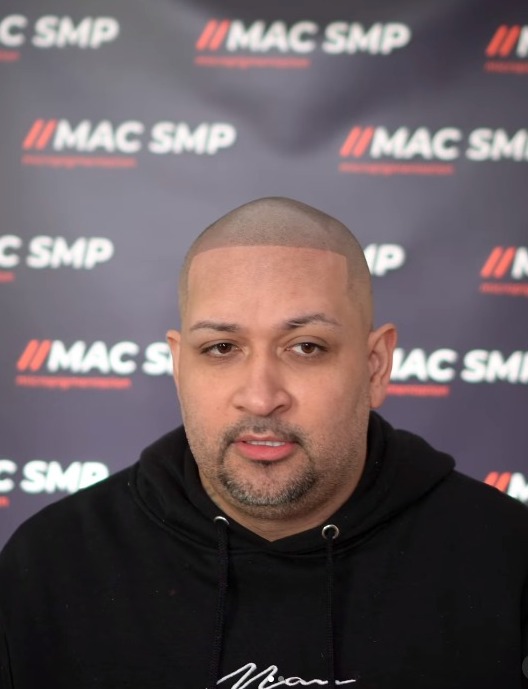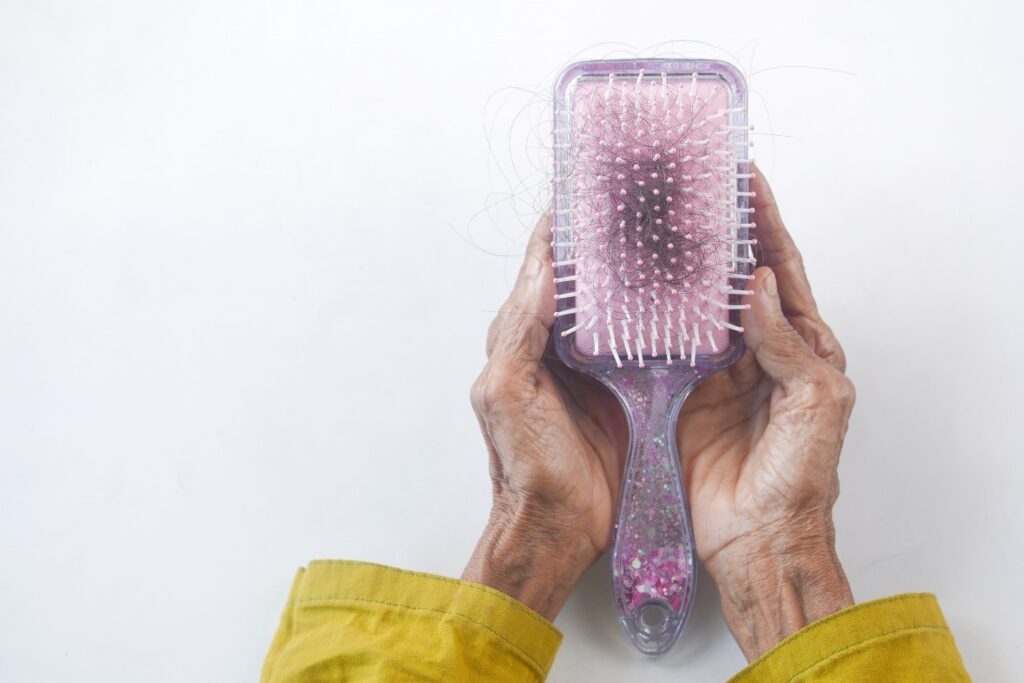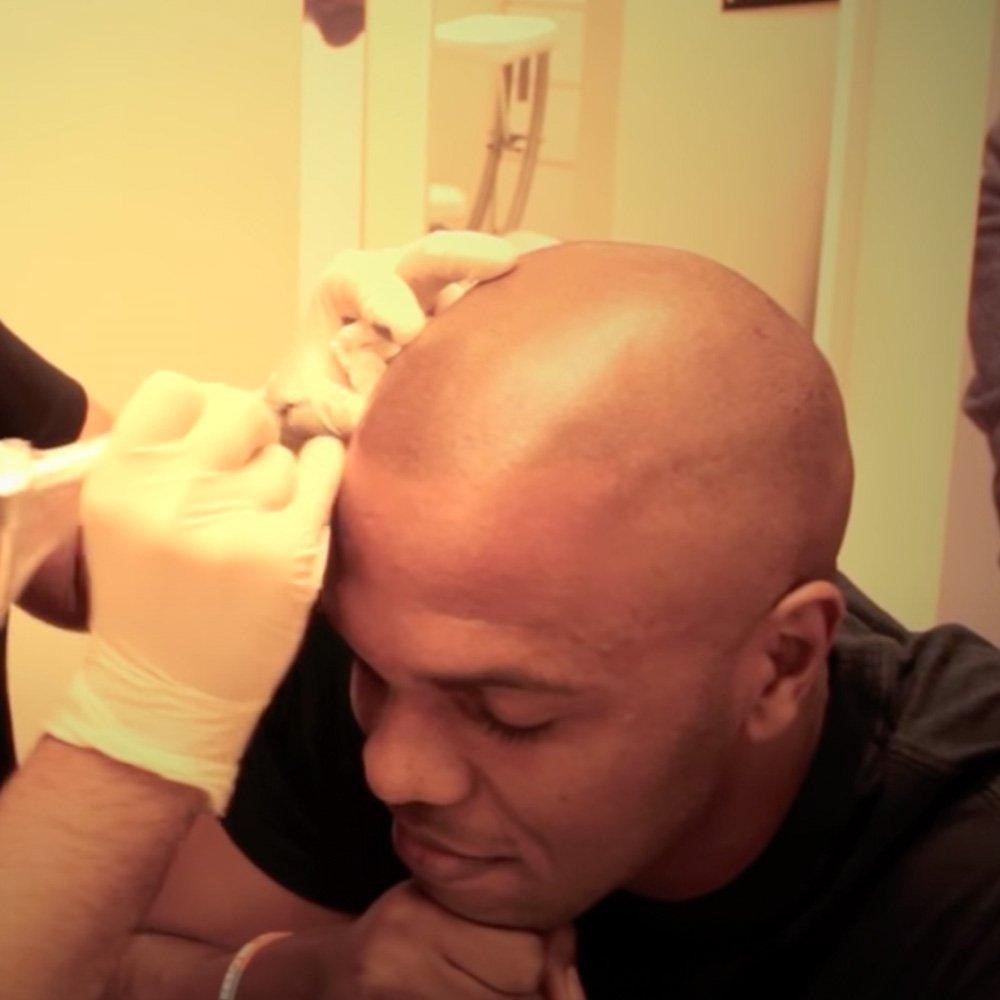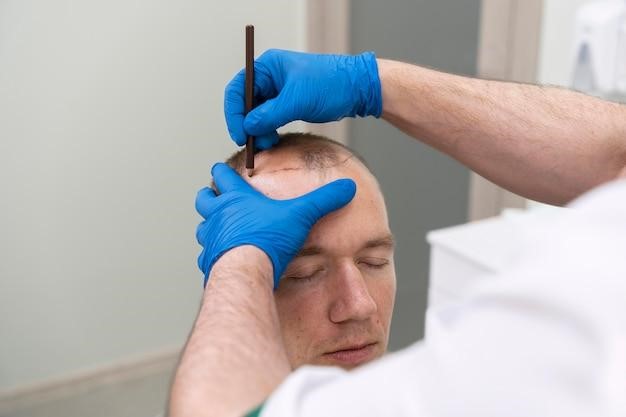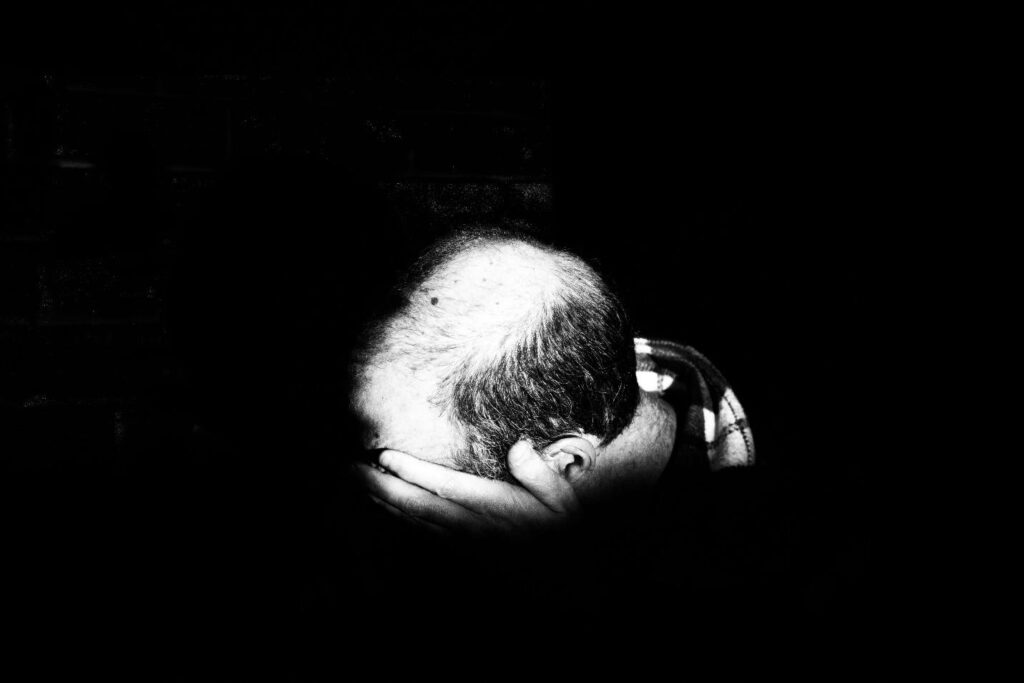Imagine staring into the mirror, no longer seeing the reflection of your thinning hair or the stark emptiness of bald patches. Instead, you see a full head of hair, meticulously recreated, a canvas of tiny dots mimicking the natural follicles. This isn’t a dream; it’s the promise of Scalp Micro Pigmentation (SMP), a revolutionary procedure rapidly gaining traction in the hair loss community. But amidst the excitement, a question lingers: Is scalp micropigmentation safe? We’ll find out shortly.
Delving into the world of SMP requires understanding the risks and rewards, separating fact from fear, and, ultimately, making an informed decision about whether this procedure is right for you. So, buckle up, grab a cup of coffee, and let’s embark on a journey through the world of micro-pigmented follicles.
Key Takeaway:
While scalp micropigmentation offers a promising solution for hair loss, it’s not without its risks. Infection, allergic reactions, unnatural appearance, and scarring are all potential concerns. Is scalp micropigmentation safe? Choosing a reputable clinic like Mac SMP with experienced technicians and rigorous hygiene protocols can significantly mitigate these risks.
Ultimately, the decision of whether SMP is suitable for you depends on your individual circumstances, risk tolerance, and desired outcomes. Do your research, ask questions, and prioritize your safety to achieve natural-looking results and reclaim your confidence.
Understanding the Procedure:
SMP, often called “hair tattooing,” involves injecting tiny amounts of medical-grade pigment into the scalp, mimicking the appearance of shaved hair follicles. It’s a non-surgical procedure performed by trained technicians using specialized needles and equipment. The process is typically completed in multiple sessions, gradually building up the density and naturalness of the simulated hair.
Safety First: Addressing Your Concerns:
Now, let’s address the elephant in the room: the safety of SMP. While the lack of incisions and surgery minimizes the risk of major complications, it’s crucial to be aware of potential downsides. Here are some key points to consider:
- Infection: Like any needle-based procedure, the risk of infection exists, primarily due to improper hygiene or sterilization practices. Choosing a reputable clinic with experienced technicians and rigorous sterilization protocols like those at Mac SMP can significantly mitigate this risk.
- Allergic Reactions: While rare, some individuals might experience allergic reactions to the pigments used. A patch test before the actual procedure is crucial to ensure compatibility.
- Appearance: The success of SMP hinges heavily on the skill and experience of the technician. Choosing someone with a proven track record and a portfolio of natural-looking results, like the artists at MacSMP, is essential to avoid an “unnatural” or “tattooed” look.
- Scarring: Though uncommon, keloid scarring is a potential risk, especially for individuals with a family history or darker skin tones. Consulting a dermatologist and choosing a technician experienced in working with diverse skin types can help minimize this risk.
Beyond the Risks: Is Scalp Micropigmentation Safe? The Rewards of SMP:
While the risks shouldn’t be ignored, it’s important to remember that SMP also offers many benefits:
- Cost-Effective Solution: SMP is generally more cost-effective than hair transplants, which can be an important factor for individuals seeking a budget-friendly option. Additionally, the long-lasting results contribute to the overall cost efficiency.
- Versatility in Treating Various Hair Loss Types: SMP is versatile and effective in addressing different types of hair loss, including male and female pattern baldness, alopecia, and scars from previous hair transplant procedures. This versatility makes it a viable option for a broader range of individuals.
- Quick Recovery Time: Compared to hair transplant surgeries that may require extensive recovery periods, SMP has a relatively short recovery time. Most individuals can resume their regular activities shortly after the procedure, making it a convenient choice for those with busy lifestyles.
- Customizable Aesthetic Solutions: SMP allows for highly customizable results. Practitioners can adjust the pigment color, density, and hairline shape to create a tailored and natural-looking appearance that complements the individual’s facial features and personal style.
- Non-invasive and Minimally Painful: Unlike hair transplant procedures that may leave visible scars on the scalp, SMP is a non-surgical technique that does not result in scarring. This absence of scarring contributes to a more seamless and natural-looking outcome.
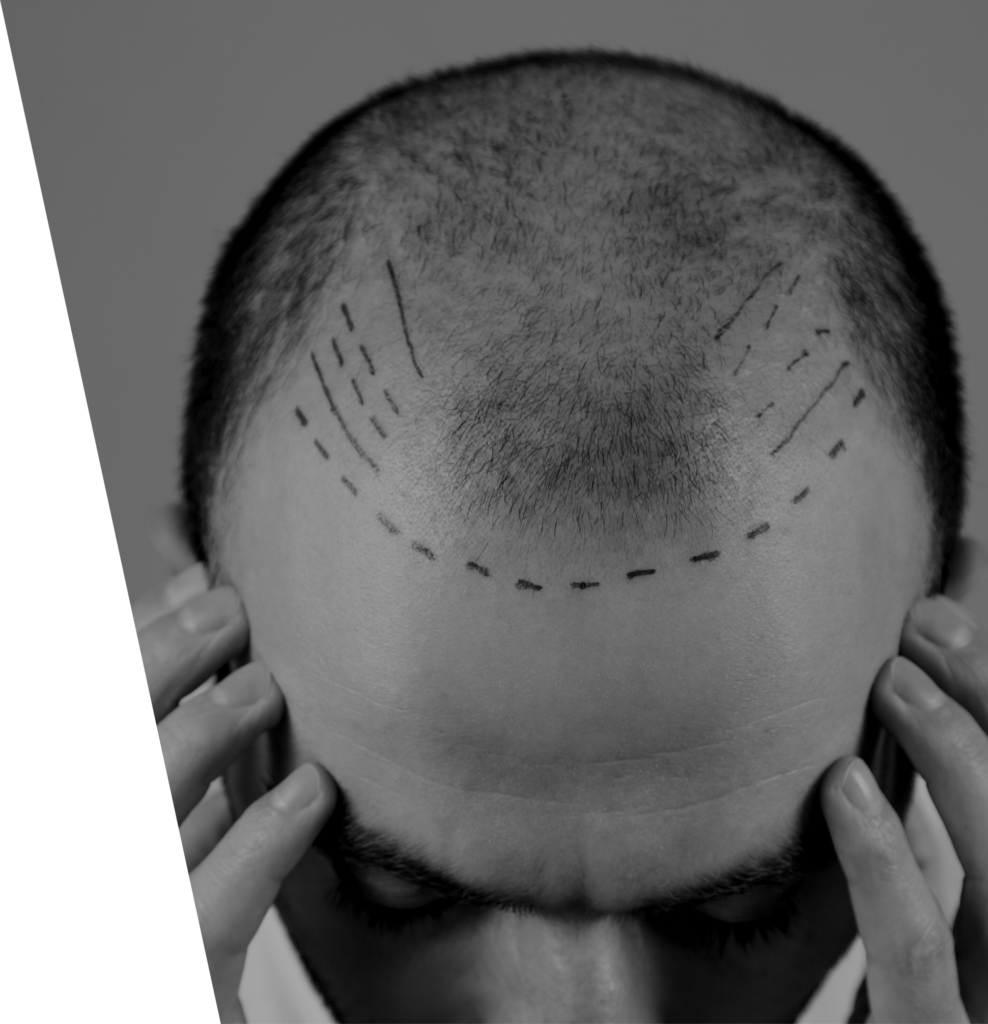
6. Suitable for All Skin Tones and Hair Colors: SMP is suitable for individuals with various skin tones and hair colors. The pigments used can be customized to match the natural hair color, ensuring a realistic and harmonious result regardless of ethnicity or hair type.
7. Enhanced Hairline Definition: SMP not only addresses hair loss but also enhances the definition of the hairline, creating a more polished and youthful appearance. This aesthetic improvement contributes to a rejuvenated overall look.
8. Time Efficiency: SMP sessions are generally shorter than hair transplant procedures. The efficiency of the process makes it more accessible for individuals with busy schedules, allowing them to achieve their desired results without significant disruption to their daily lives.
9. Low Maintenance: Once the initial sessions and touch-ups are complete, SMP requires minimal maintenance. Individuals can enjoy their restored appearance without needing daily treatments, making it a practical choice for those seeking a hassle-free solution.
10. Psychological Well-being: Beyond the physical benefits, SMP positively impacts an individual’s mental health by reducing anxiety associated with hair loss. The restored sense of normalcy and well-being can profoundly impact one’s overall psychological health and outlook on life.
Mac SMP: Your Partner in Scalp Micropigmentation
At Mac SMP, we understand the concerns surrounding SMP. We believe in transparency and providing our clients with the knowledge and resources they need to make informed decisions. Our team of experienced and certified technicians is committed to the highest standards of safety and artistry.
We use only the finest medical-grade pigments and follow stringent sterilization protocols to ensure your well-being. We also offer comprehensive consultations and flexible payment plans to address your concerns.
FAQS – Is Scalp Micropigmentation Safe?
Can scalp micropigmentation go wrong?
Yes, like any procedure, SMP can go wrong if not performed correctly. This is why choosing a reputable clinic with experienced technicians is crucial. Potential issues include:
- Unnatural appearance: Poorly chosen pigments or inexperienced technicians can lead to an unnatural look that resembles a dark tattoo rather than natural hair follicles.
- Excessive bleeding: Improper technique or existing skin conditions can cause excessive bleeding during the procedure.
- Scarring: While rare, scarring can occur if the procedure is not performed correctly or if the individual is prone to keloid scarring.
Is scalp micropigmentation a good idea?
Whether SMP is a good idea for you depends on your individual circumstances and desired outcomes. Consider factors like:
- Your medical history: Certain medical conditions might make SMP unsuitable. Consult your doctor for advice.
- Your expectations: SMP creates the illusion of shaved hair, not actual hair growth. Set realistic expectations and understand that maintenance sessions will be required over time.
- Your risk tolerance: Weigh the potential risks and rewards carefully. If you are highly risk-averse, SMP might not be the right choice.
Does scalp micropigmentation damage hair follicles?
No, scalp micropigmentation does not damage hair follicles. It is a purely cosmetic procedure that involves pigment deposition in the upper layers of the skin, well above the hair follicles. So, if you are considering hair growth treatments in the future, SMP won’t hinder their effectiveness.
Conclusion: Weighing the Scales, Taking the Leap:
So, is scalp micropigmentation safe? The answer, as you’ve seen, is nuanced. According to research, while risks exist, they can be significantly minimized by choosing a reputable clinic, understanding the procedure and correct pigments, and prioritizing your safety.
Ultimately, the decision rests on your unique needs, your comfort level with the risks, and your desire for a permanent, confidence-boosting solution to hair loss.
If you’re considering SMP, remember that knowledge is power. Do your research, ask questions, and ensure you choose a clinic that prioritizes your safety and well-being. At Mac SMP, we’re here to guide you through every step of the journey, ensuring you achieve the beautiful, natural-looking results you deserve. Schedule a free consultation with us today and take the first step towards reclaiming your confidence and embracing a fuller head of hair.
